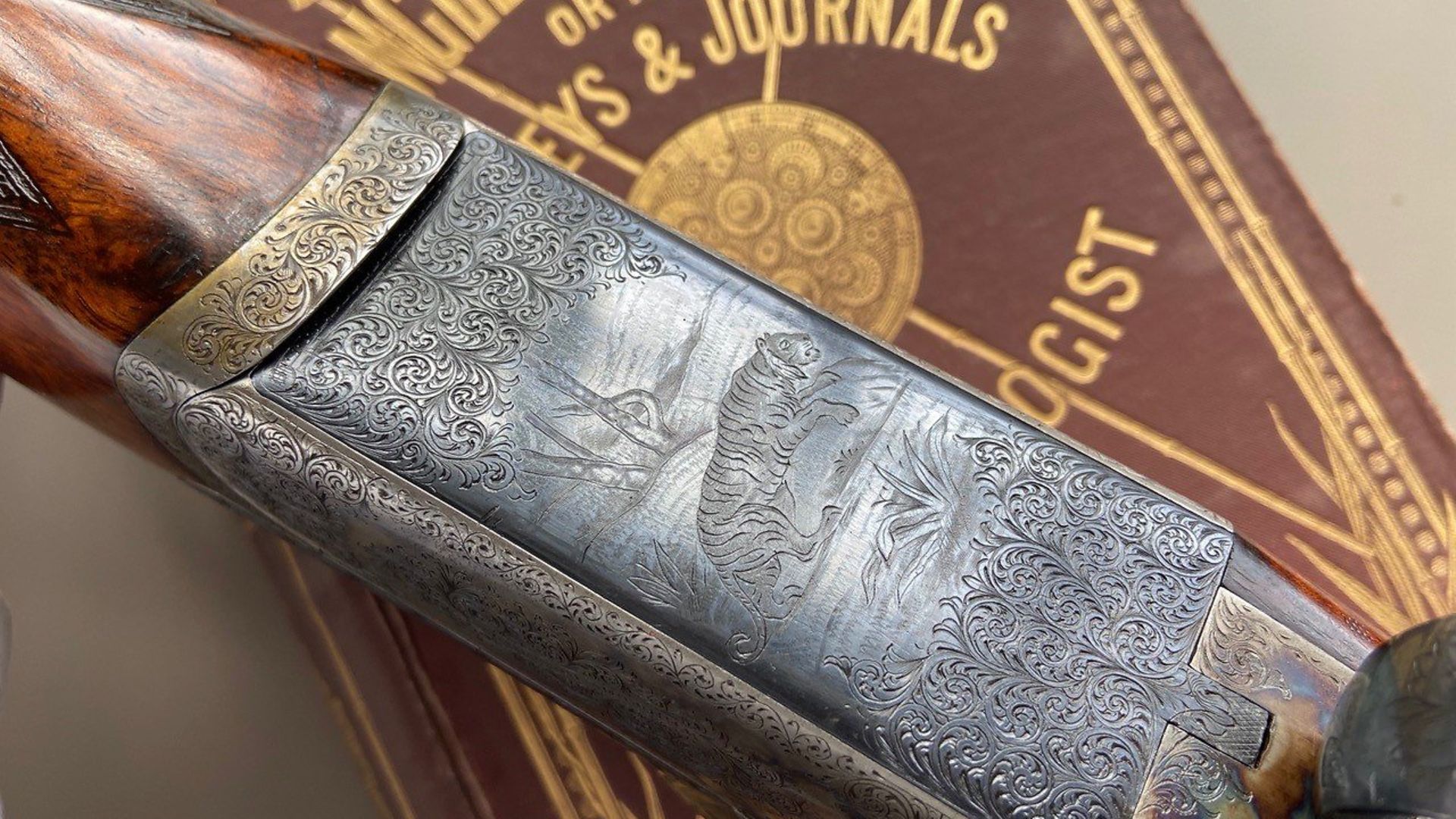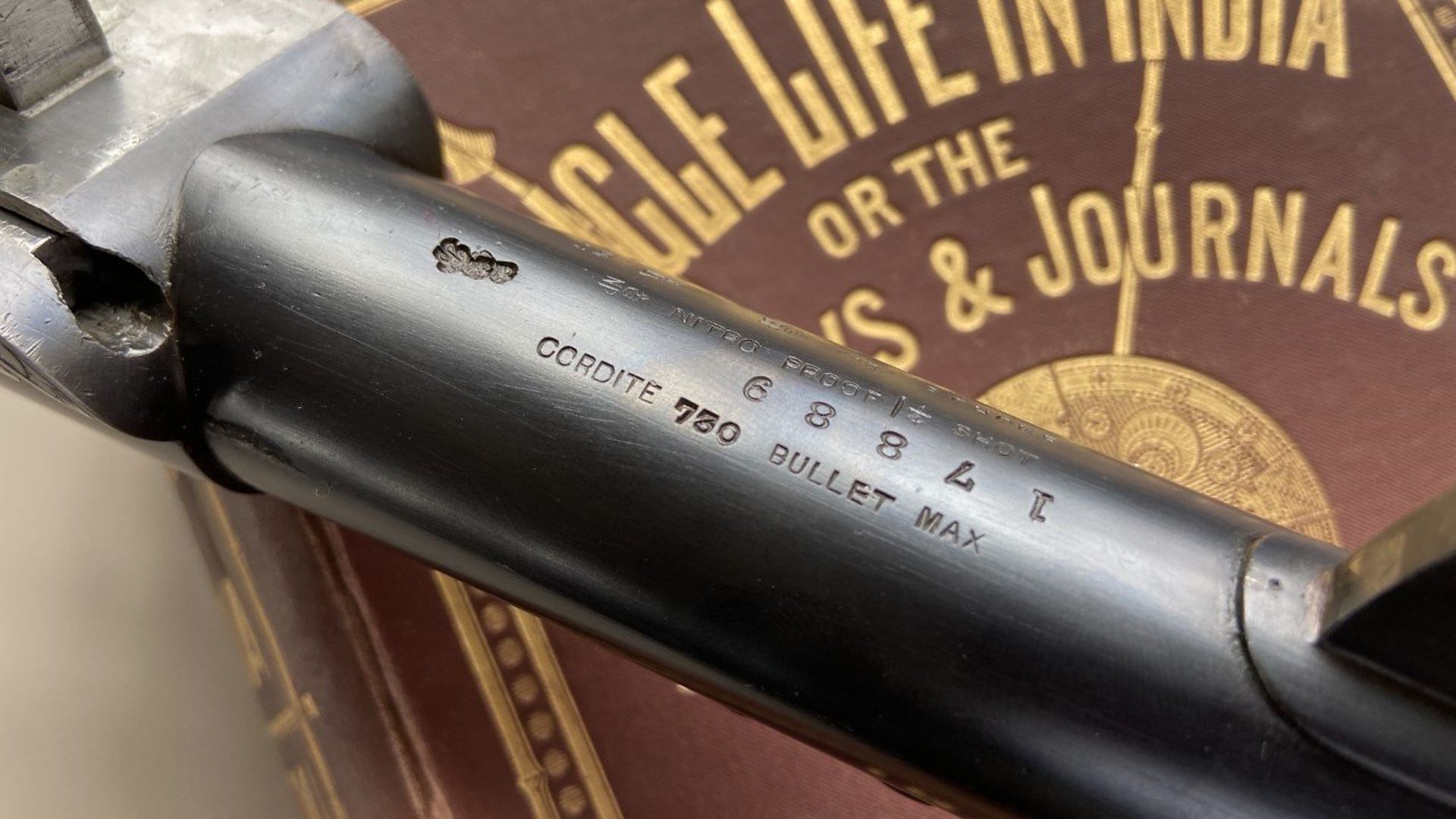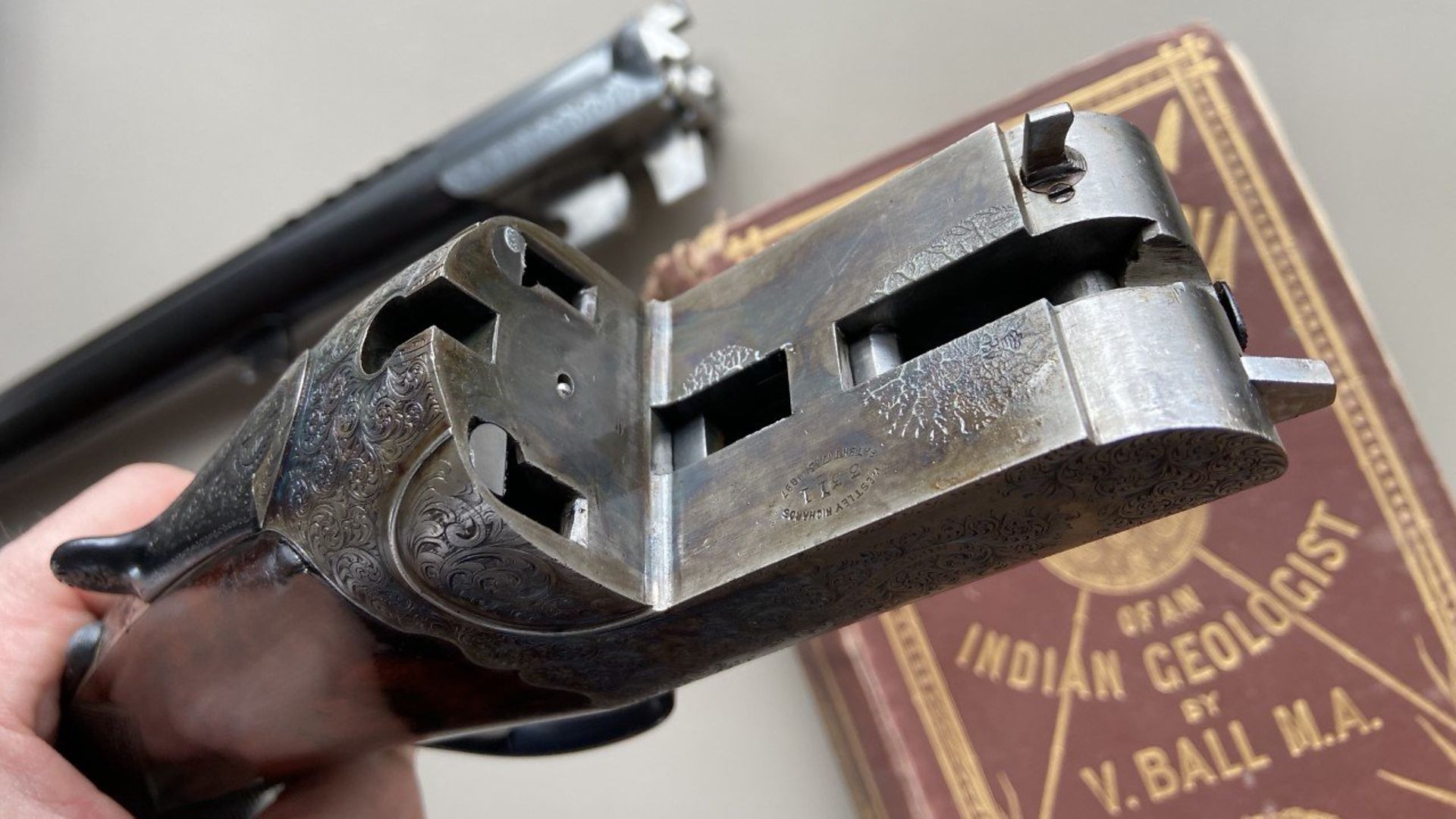Diggory Hadoke explores the world of ‘ball & shot’ guns, an intriguing combination of shotgun and rifle that has sadly vanished from our modern shooting repertoire
 credit: Archant
credit: Archant
Shotguns with rifled choke sections to improve their performance with ‘ball’ were quite popular at one time. They are generally known as ‘ball & shot’ guns. The rationale was that if space or funds were limited, how could the sportsman or colonist take one gun/rifle that would do both jobs well enough?
The most famous of these guns was Col. G.V. Fosberry’s ‘Paradox’, which Holland & Holland sold in fair numbers. For many, ‘Paradox’ is the generic name for such a thing. However, many other firms sold their own version of it. Army & Navy had ‘The Jungle Gun’ and Westley Richards had the ‘Faunetta’ (a 20-bore) and the ‘Explora’ (a 12-bore).
Every example of a ‘Paradox’, or derivative, I have seen to date was a double-barreled weapon. Here, however, is the first single-barrel Westley Richards ‘Explora’ to emerge from hiding. This one is not exactly an ‘Explora’ though; the lettering on the barrel tells us it is a ‘Super Magnum Explora’. The first iteration of the Explora was a 2½" chambered gun, while the ‘Super Magnum’ version had the longer 2¾" chambers.
 credit: Archant
credit: Archant
Double duty
Westley Richards stated: “The basis is a shot gun, having the weight and general handiness of a shot gun but in addition capable of shooting a bullet accurately and effectively to 300 yards.”
Muzzle velocity improved from 1,250 fps to 1,500 fps and muzzle energy from 2,611 ftlbs to 3, 643 ftlbs. Both fired the 730gr bullet developed by Westley Richards’ Managing Director, Leslie Taylor. These were nitro cartridges, loaded with Cordite (45 grains in the case of the Super Magnum Explorer). The weight of the more powerful gun was raised from 7lbs 8oz to a clean 8lbs.
People are often sceptical about the accuracy of a ‘slug gun’ but these were Best quality creations and built to incredibly high standards. The Super Magnum Explora was tested to fire five consecutive shots into a target 3½" by 3" from a range of 100 yards (using a double-barrelled version). Literature from the time asserts ‘LT’ bullets were accurate and deadly out to 300 yards.
It is worth examining these bullets a little closer. They look like brass shotgun shells but the neck is crimped and from the end projects a pointed brass bullet. The brass cap ensured penetration, while the massive lead body provided the weight and smashing power, which must have delivered terrific shock and tissue damage. They cost £5 per hundred. The gun itself in best quality cost £132.10.0d. So, the rifle cost about 25 times what 100 cartridges cost.
Lord Hardinge, the Viceroy of India used a Super Magnum Explorer to hunt tigers and wrote, “I prefer it to any big bore rifle here”. He reports shooting a 9'4" tiger which “fell down like a rabbit at one shot”.
 credit: Archant
credit: Archant
One of a kind
The example you see in these photographs is the only single-barrel Super Magnum Explora known. It was built in 1923 for a customer in India and shipped with a large quantity of bullet and shot loaded cartridges.
It remains in remarkable condition, only the original rubber pad having been replaced, as the rubber would have perished. The stock is made from a very nicely figured blank of walnut and the grip is elegant and comfortable to hold.
The muzzle shows the coarse rifling in the last three inches that spins the bullet and delivers the accuracy that would be impossible in a smooth bore. With shot, it is thought to deliver unaltered Improved Cylinder patterns.
The gun appears to be modelled on the Westley Richards’ single-barrel guns they marketed as ‘trap & duck’ guns. However, these were fixed-lock guns without doll’s head extensions. The Explora is fitted with a hand-detachable lock of the Taylor patent. What sets all these single-barrel guns apart is the bolting mechanism. The Explora has a conventional looking Westley Richards top-lever but the doll’s head is not bolted in the usual manner. Instead, it has two projections from either side of the barrel, which fit into the action face, where they are bolted by spring-loaded bolts, retracted by the top-lever. The ‘Ovundo’, the Westley Richards over-and-under, used the same system,
The likely quarry for the gun is depicted on the floorplate – a tiger in a forest setting, which is unsurprising given that the destination was India. It was not ordered by a maharajah; the customer was a wealthy industrialist.
Comparing the cost of the single-barrel Super Magnum Explora with that of a single-barrel trap gun, the former cost £80 and the latter £55, so the additional expense of rifled chokes, sights and hand-detachable locks added about a third to the cost
This was a Best quality, bespoke order, but how does it compare to the cost of bespoke rifle building today? The overall purchasing power of £80 in 1923 was equivalent to £5,000 in 2021. However, to put it in another context, the cost of the average house then was £350, so £80 would buy you a quarter of a good house. Today, the average house is £187,000. Using that comparison, the Super Magnum Explora in modern terms should cost about £45,000, which is probably about right.
This unique gun deserves its place in a major collection. What is its value today? That is impossible to determine with any degree of accuracy, but what is certain is that you will not see another one.